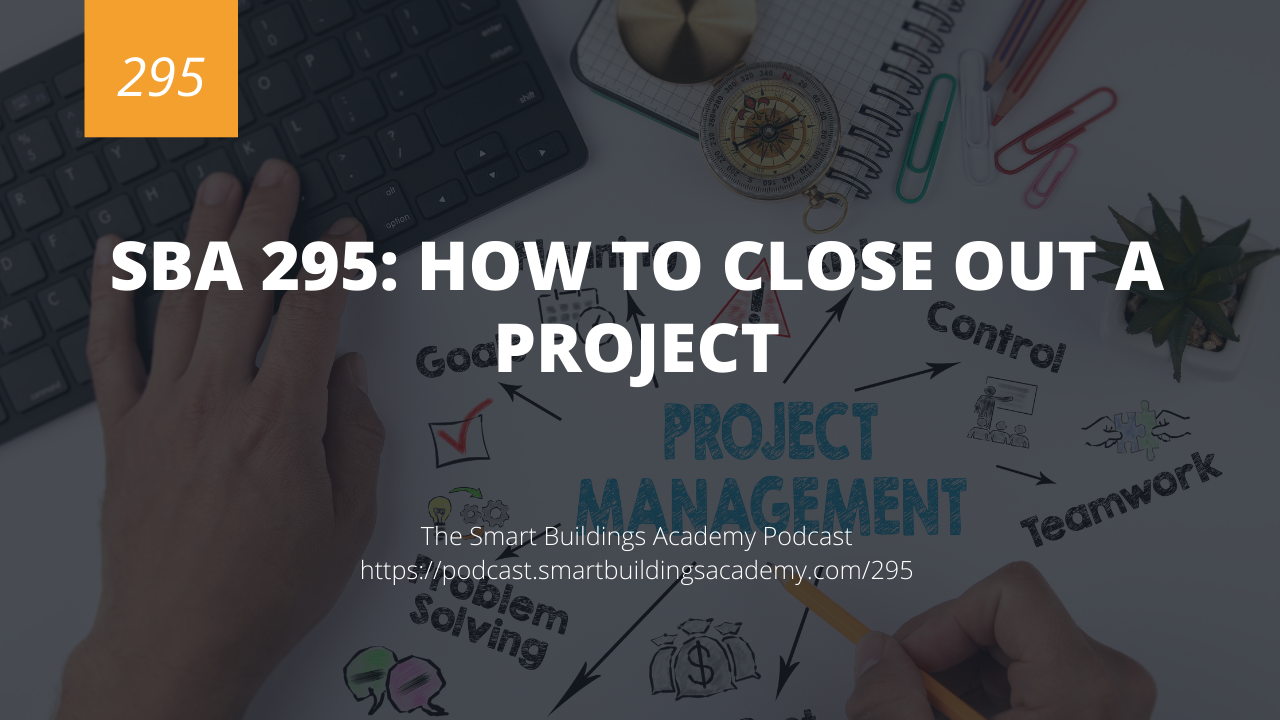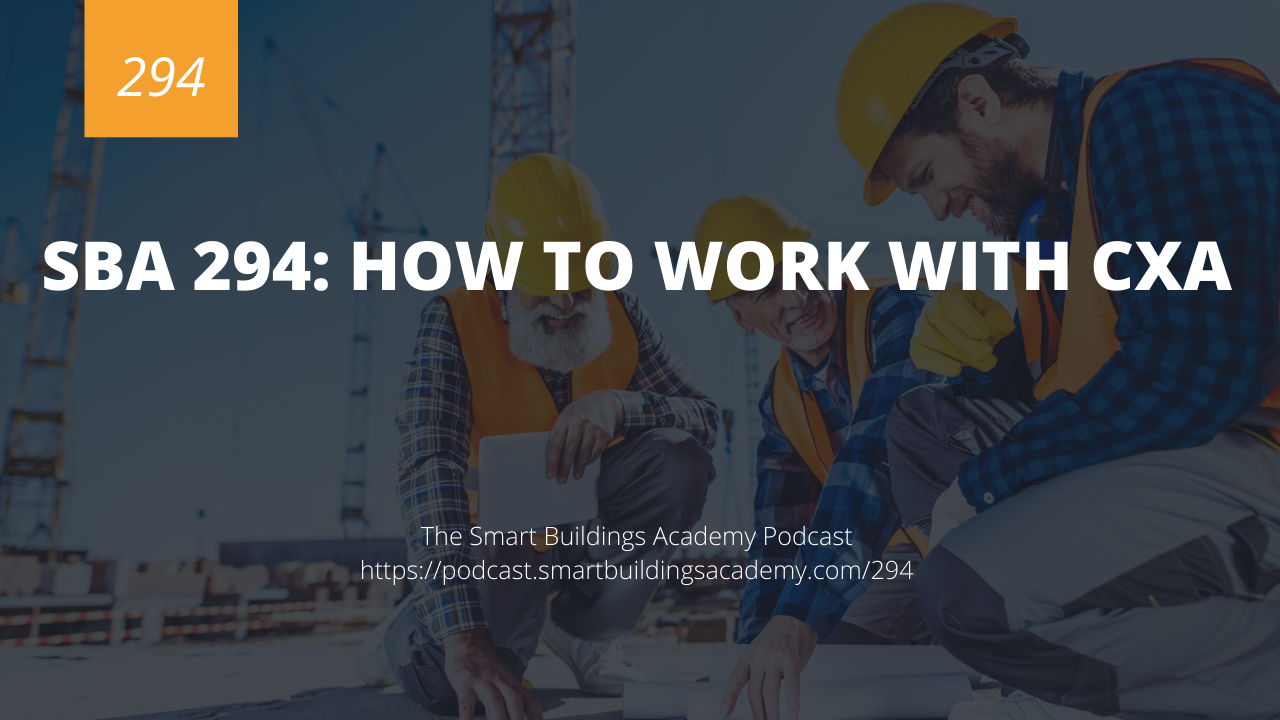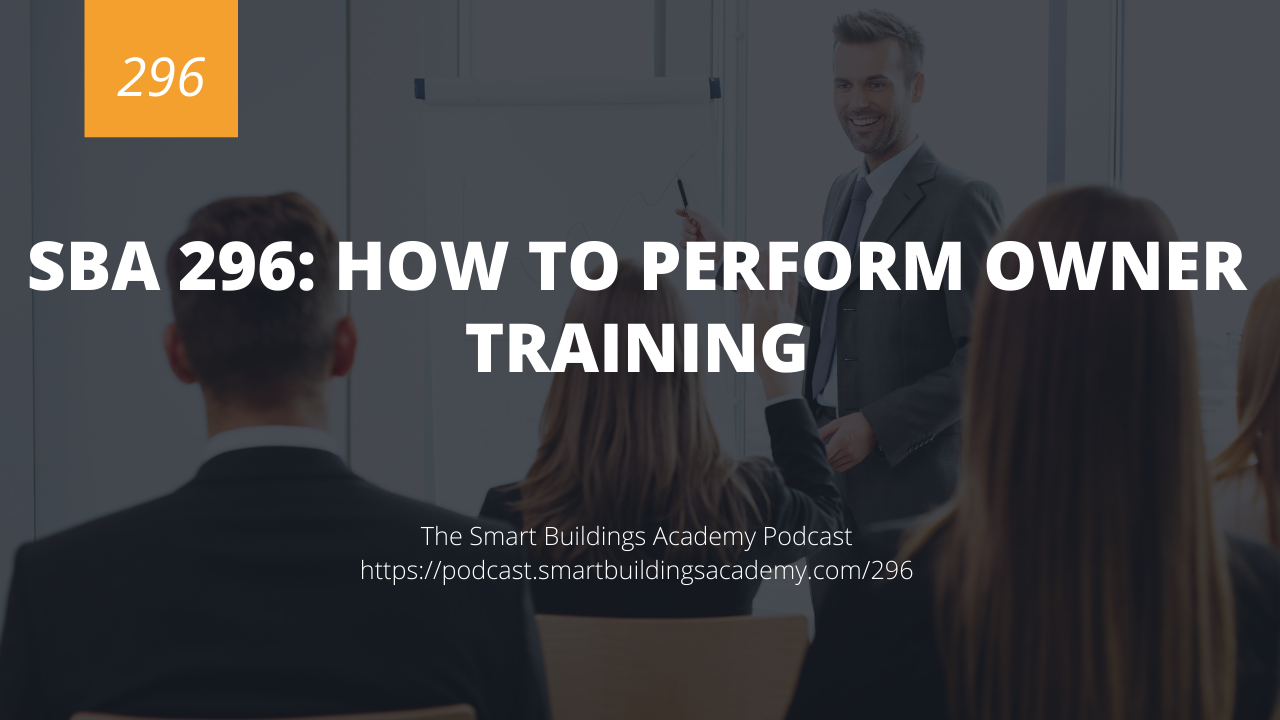Learn how to close out your building automation projects while avoiding slippage, warranty issues, and chargebacks.
Click here to download or listen to this episode now.
Resources mentioned in this episode


Transcript
Phil Zito 0:00
This is the smart buildings Academy podcast with Phil Zito episode 295. Hey folks, Phil Zito here and welcome to episode 295 of the smart buildings Academy podcast. In this episode, we are going to be talking about how to close out your projects. So up to this point, right we have gone and we've kicked off our projects we've executed them. We've done the programming, the graphics, the install,
Phil Zito 0:27
we've dealt with the commissioning agents, we dealt with test and balance, and we are coming up to that point where we need to finish up our project. Now, this is the second most likely phase at the end of a project to kill the profitability of your project. Now there's plenty of parts within a project that can kill the profitability up front, we've discussed those right not having released operations from sales, not doing proper submittals not lining out your subs, those are the big three. But when it comes to closing out your project, there's really two main areas that you need to focus in on. And the first is going to be getting proper as builds proper red lines, and making sure that the the owner understands how to utilize the building. That's the Closeout process in a nutshell. And we'll talk about owner training in a future episode. I believe it's the next episode, if I'm not mistaken. But that is one part, right. And the other part is the warranty phase. Not having you know clear boundaries on your warranty phase, not understanding how to manage the warranty phase that can also kill out your product, kill your projects profitability. And we'll talk through that as well in a future episode. But let's go back real quick to closing out your project. And if it sounds like this episode is stopping and starting abruptly. That would be true because I have the kids home today. And they are running around screaming and fighting each other and making all sorts of wonderful sounds. So yeah, this episode may seem a little choppy. Forgive me for that. But hey, it's real life. Right? Alright, so back to closing out the project. So we've got these things called as belts, and they are exactly what they sound like. They are as built the how the project is built, how the project is presented, how the submittal documents exist, as the project is built. So how do you create as built? How do you get these things that are needed to close out the project. We'll get to that in just a second. But before we do, let's talk about a couple more things. So in order to do a proper close out, you need to have an O and M manual. O and M manuals are operations and maintenance manuals. And these om manuals enable you to operate and maintain the building, not you really but the owner, right, so the O and M manuals are going to have as belts, they're gonna have to point to point checkout sheets, the functional test sheets, they're gonna have catalog sheets that can have the as built submittal set, they are going to have instructions on how to use the software etc. And that is what we really want to build out in our closeout phase. But and this is the big thing people miss, they get into this. And I've been guilty of it so many times this autopilot mode where they're like I've done so many of these, I know exactly what to do. And they don't read the specifications, they don't go to section three and Section One of the specification and read the close out expectations, and then they don't get their retainage. So retainage is a portion of your payout for the project that is held until you execute the project. Think of it as like a reverse escrow. So they hold that money until you've fulfilled the contractual expectations and then you get it. Now here's the thing that can be fairly large on a large project on small projects not such a big deal. But on large projects, definitely a big deal. So we really want to capture that money. And we also want to leave a good impression with the owner because what we have to realize is the owner who built the project who worked on the project, most likely is not the same owner operator who's going to maintain it, this owner operator probably has no idea who you are. And maybe and I've seen this happen so many times, maybe that owner operator is used to Siemens or Johnson or tritium. And maybe you're a completely different manufacturing, guess what? They just got your system handed to them. And they're like, I hate that system, not because they hate you or hate your system, but because they don't know your system. So the experience you create from the closeout phase on is going to dictate your war. phase and your callbacks. And that's going to dictate any potential future service work, it is critical that you understand that. Because if you want to get off the project, and you don't want to be being called back, because I can't figure out how to change the temperature, I can't figure out why this lights blinking, and all these and then having to go to the contractor and dispute that as a warranty charge. Then listen up, because getting the project closeout done, right, getting owner training done, right, getting owner operation and maintenance documents done right is going to ensure that you deliver a experience to this facility operator who may not know you that they can now be like, okay, you know what, I like these guys or gals, I like these folks, and they're delivering a good experience, and I'm not going to bug them during warranty. Okay. So that's one really important point I want to make out to you. And the other is also if you don't follow the specification, and you don't follow that part one, general and part three execution of the specification, at least here in the States CSI spec Masterformat. If you don't follow that, then you can be held contractually liable for the deviant or the not deviance deviations from that requirement. And next thing you know, you're getting told everything's your fault. And, man, I have seen people spin some like crazy stories, crazy stories, because my close out documents didn't match up. So for example, one was an undersized boiler. And my documents did not match up the as built layout of the hot water plant. Granted, it was the piping. I mean, I have no control over piping, I'm in building automation. But I didn't have that. So guess who had to join every frickin meeting on the sizing of the boiler because there as builts didn't properly represent the piping layout. I mean, had nothing to do with controls, nothing, there was nothing my control system could do to make more heat come out of this boiler. But because my submittal plans are my as belts did not properly represent the piping changes that were made by the mechanical guests who was getting calls to the regional General Manager by a mechanical that we do business with all the time. And so that mechanical was saying, Well, if you want future work, then you better have someone out here to represent us. Because blah, blah, blah, I'm like, okay, so I would sit there on my phone and just browse Facebook for an hour, you know, every week while this meeting was going on, because there was nothing that I could have done. But that was an hour of my time that was not built into the project. Now granted, that was my fault, I should have updated the as belts should update at the red lines. But I didn't think I needed to change the piping. I didn't even think about the piping. I didn't even sit there and think to myself, I should go check the piping and make sure it it's still matches up what I copied from the MEP set. But I mean, that's what happened. I didn't copy the new MEP set as built plumbing diagram. And because of that I got stuck on a jobsite. I know that's a long story. But I really wanted to kind of hammer down that point of it's not just enough to follow the specs you need to go and make sure that you cover your bases because people are gonna get free workout to you any way they can. And the ongoing joke is true, it is always controls fault. So just be aware that right? It's always your fault, because we're the last ones on the job. Alright, so let's go into what the Closeout process looks like what the closeout documentation looks like. Okay, so first things first, we need to go and collect all of the documents that are required from section one general And section three execution we need to go collect those and we need to package them into an OEM manual. Once we start collecting the documents, we need to collect what are called red lines and red lines are where you take a red pen and you mark up the drawings to accurately represent as built conditions. This is where you will go and mark up your controller drawings your network riser, your sequence of operations, anything that is changed, you will go and mark up. Now red line coordination is an often overlooked but very important topic that is not discussed near enough. So redline coordination is where you as the submittal person who's building these as belts and own em set. You need to go to your electrical you need to go to your tax and your programmer whoever is going to be changing something, and you need to get them all on the same page. That is why I like to have a master submittal set on job that usually sits in the job box for the electrical. And I will go and have everyone update their red lines to the master document set. That way, we have one single source of truth that represents our as built conditions. Then at the end of the project, I will take all of that information, I'll bring it back, I
Phil Zito 10:32
will update, I will look at my actual ordered bill of materials, not my submitted bill of materials, but my ordered bill of materials. And I will build out my catalog sheets. And I'll make sure I have the proper catalog sheets, I will make sure that I have my documentation for my functional test. And for my point to point, and I will make sure I have any other prerequisite information that is required, like owner training, access to the software, etc, I will get all of that buttoned up. And then and only then will I create my own end package. And I will submit my own end package for final project closeout. That's how I do. But there's another biggie that a lot of people miss here. I don't know why they miss it. But it just is. And I've seen it at large OEMs all the way down to one man shops. So this is not a size thing. But it's make backups, please, for the love of whatever you believe in, make backups. Go on site and make a database backup, make graphics backups, make programming backups, make copies of your own M set all of that information, you need to have backups and stored in to at least two locations. So if you're going to store it on your local computer, then have it in a cloud backup have it somewhere that you can access it later. Because there is nothing worse, nothing worse. Then you install a system, a facility owner takes over, they have a guy or gal who's semi functional on the building automation system, they get in there, they start tweaking set points, maybe you mistakingly left the test and balance page still installed on your building automation system. Maybe you left that page there. And now guess what they're in, they're changing min and max CFM flows. And you don't have those documented. Once again, any set points, any settings, get them documented, have backups have backups of your backups, because it is a lot a lot easier to restore the install state than it is to go and troubleshoot the customized owner state. Let me repeat that just so we're clear, it is a lot easier to go and restore the installed state, then the Cust then to troubleshoot and repair the customized and user state, okay, want to be crystal clear on that. Because at the end of the day, that is what you're going to be called out there to do. They're going to change settings, they're going to change set points, and you're going to have to fix it. So I want to make sure that we are crystal clear on that. So that there is no issues with you getting callbacks for those reasons. All right. Now, all of that being said, Okay, we got all that being said, Here is the thing, I want you to pay attention to the owner training, we're not going to talk about it just this episode, we're actually have a separate episode, the owner training, I meet a lot of people who think that the less the owner knows, the better I will tell you from experience, the more the owner knows, the better to appoint. Having an informed uneducated owners is going to cause problems, especially if they have access to the system. But even worse than that, having educated owners that are educated on the wrong things without having the clear underlying knowledge to understand what you're educating them on. It's going to be an even worse problem. So proper education and proper instruction of the owners is critical. And that is something that we'll talk about in the next episode. Additionally, warranty phase, we really want to get tight on our warranty phase processes. We want to have a warranty log, we want to understand exactly what is contractually expected of us during warranty. How are warranty calls escalated. What time period are we expected to respond? How do we dispute a warranty call? What are our bill back or chargeback options? We want to understand all of that. Now we'll talk about that in a future episode as well. Okay, so there you have it closing out a project. I hope you all really paid attention to this. I apologize for the start stopping and starting You may have even heard my dog barking in the background as my kids chased each other fighting for doughnuts. Wonderful, isn't it great life. But that being said, I really I know 100% If you pay attention to what I just taught in this episode, you will close out your projects more reliably. You will make more profit on your projects and you will have less slippage, less warranty call issues, and just in general, you will have a happier life.
Phil Zito 15:30
I look forward to hearing your thoughts on this. Thanks a ton and take care





